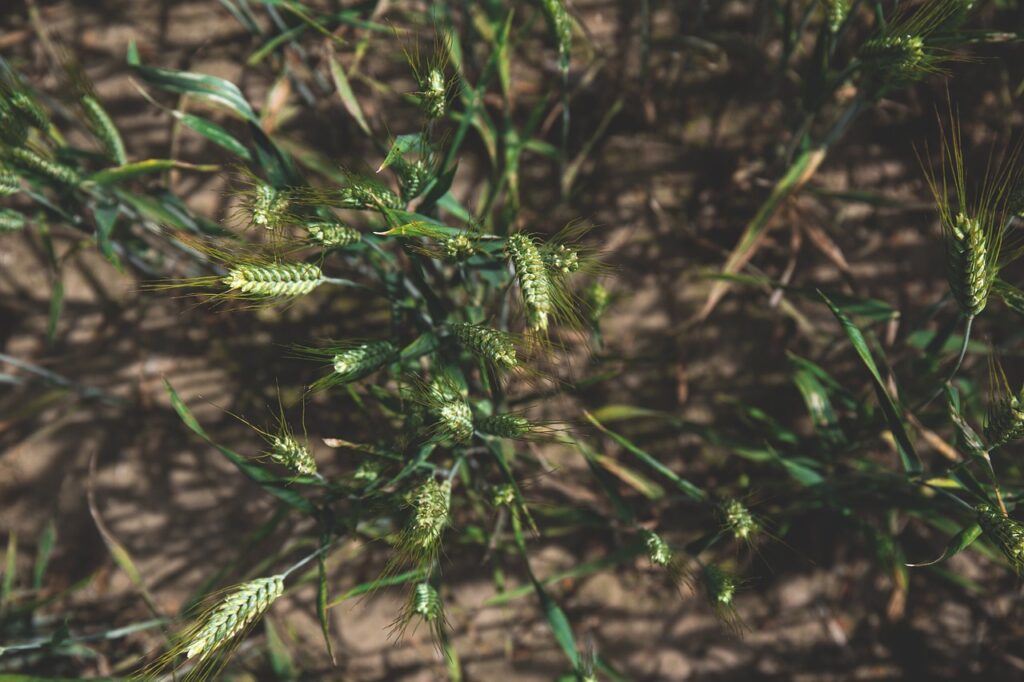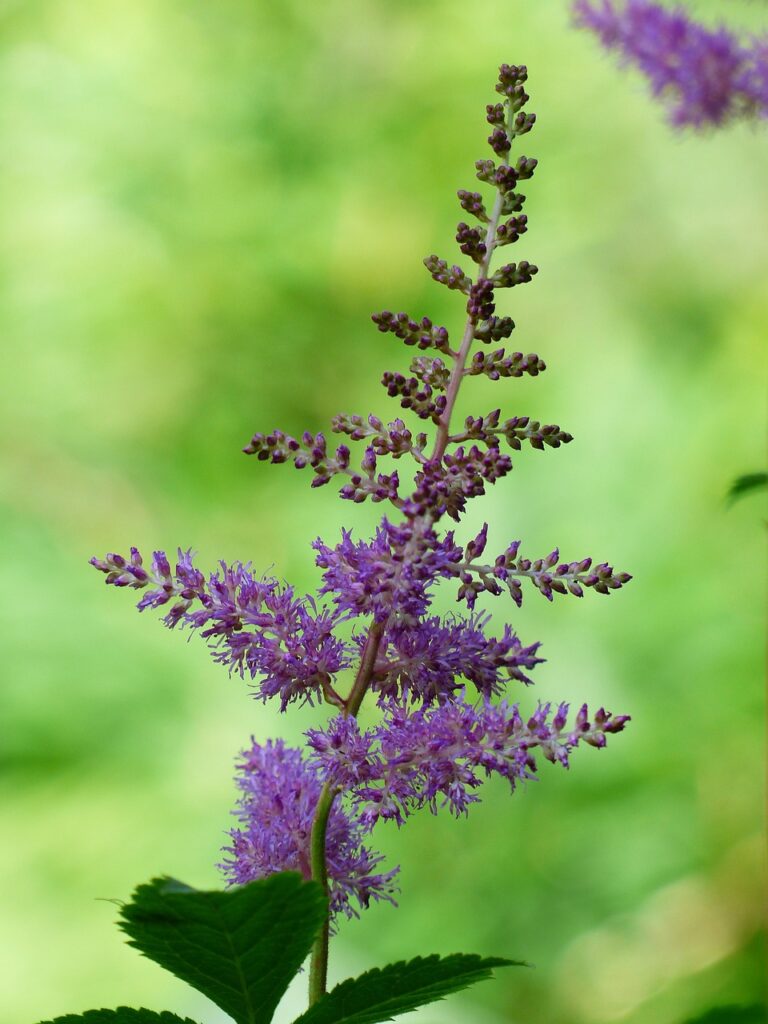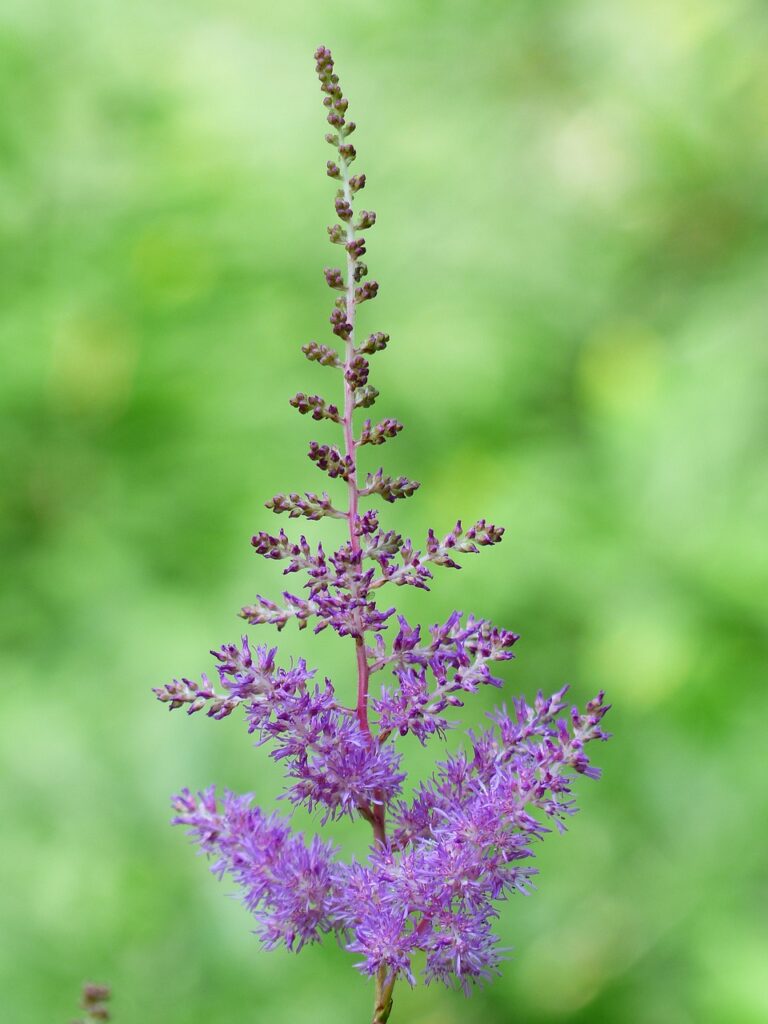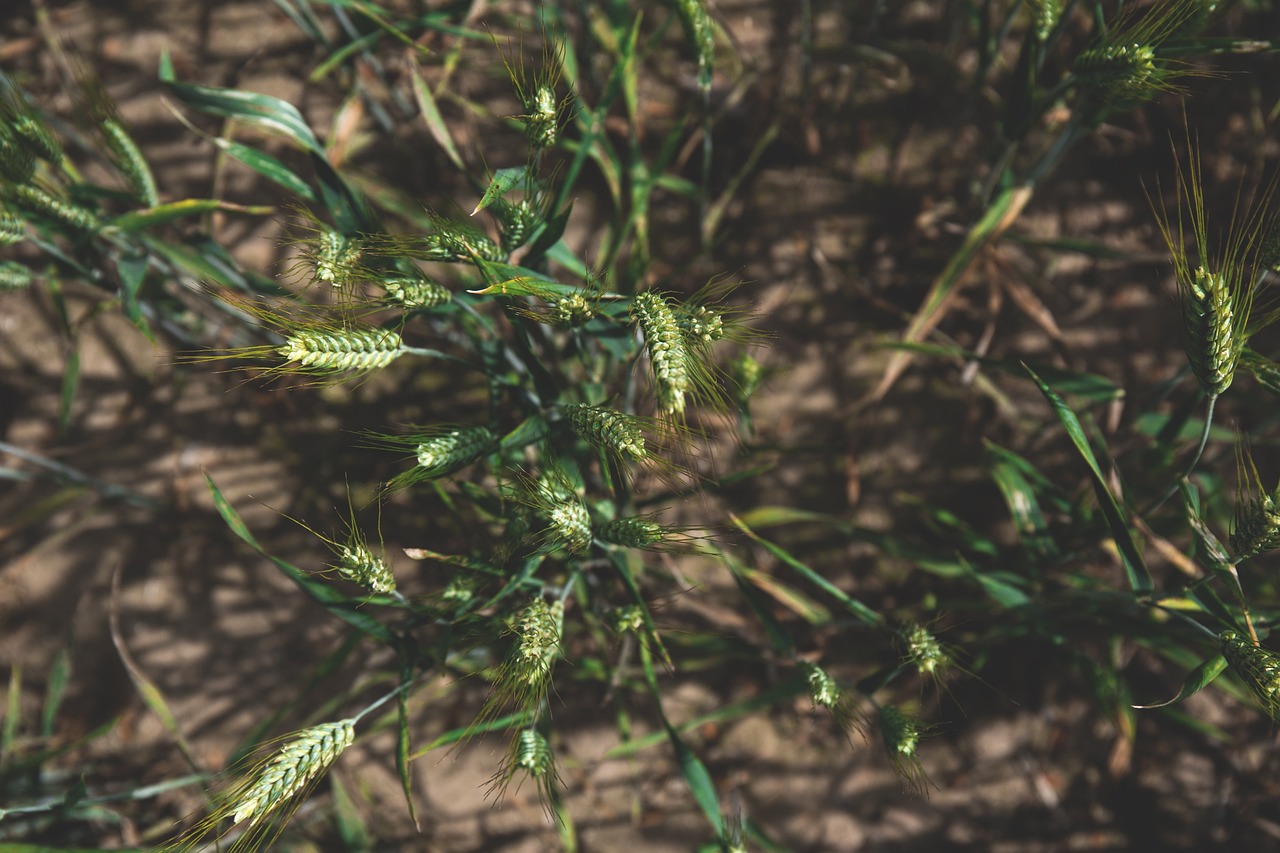Imagine a world filled with endless varieties of tulip-shaped flowers, each one more captivating than the last. This magical realm is made possible by the fascinating process of orchid crossbreeding, where scientists and horticulturists join forces to create new hybrids. In this extraordinary journey, we will explore the mesmerizing world of orchids, uncovering the secrets of their crossbreeding techniques, and discovering the wondrous range of hybrids that have been brought to life through this enchanting process. Get ready to be captivated by the beauty and allure of these unique blooms as we delve into the magic of orchid crossbreeding. Orchid crossbreeding is a fascinating and rewarding practice that has numerous benefits for orchid enthusiasts. By combining different species or varieties of orchids, crossbreeding allows for the enhancement of traits, the creation of unique colors and patterns, and increased resistance to disease and pests. In this article, we will explore the methods, techniques, and challenges of orchid crossbreeding, as well as the role of orchid breeders and the future possibilities in hybridization.
Enhancement of Traits
One of the main benefits of orchid crossbreeding is the enhancement of desirable traits. By carefully selecting parent plants with specific characteristics such as large flowers, strong fragrance, or long-lasting blooms, breeders can create new hybrids that exhibit these traits to a greater degree. For example, by crossbreeding two orchids with vibrant flower colors, breeders can produce offspring with even more intense and striking hues.
In addition, crossbreeding can also help to improve the overall health and vigor of orchids. Through the combination of different genetic traits, hybrids can become more robust, with increased resistance to diseases and pests. This can ultimately result in stronger and longer-lasting plants that require less maintenance and care.
Creation of Unique Colors and Patterns
Orchid enthusiasts are often captivated by the sheer beauty and diversity of orchid blooms. Crossbreeding offers the opportunity to create unique and mesmerizing colors and patterns that may not naturally occur in orchid species. By mixing the genetic material of different orchids, breeders can produce hybrids with new, exciting, and never-before-seen color combinations.
For example, by crossing an orchid with red flowers and another with white flowers, breeders can potentially produce offspring with pink or even variegated blooms. The possibilities are truly endless, and each new hybrid brings with it the thrill of discovery and surprise.
Increased Resistance to Disease and Pests
A major concern for orchid growers is the susceptibility of their plants to diseases and pests. Crossbreeding can help address this challenge by introducing genetic traits that confer resistance or tolerance to various pathogens and pests. By selecting parent plants that have shown resistance to common orchid ailments such as bacterial or fungal infections, breeders can create hybrids that are better equipped to withstand these threats.
Furthermore, crossbreeding can also help in reducing the risk of inheriting genetic weaknesses or susceptibilities from parent plants. By carefully selecting parent plants with strong and healthy traits, breeders can minimize the chances of producing offspring that are prone to certain diseases or vulnerabilities.

Methods of Orchid Crossbreeding
There are several methods of orchid crossbreeding, each with its own advantages and challenges. These methods include natural pollination, hand pollination, and in vitro pollination.
Natural Pollination
Natural pollination is the simplest and most common method of orchid crossbreeding. This occurs when orchids are pollinated by insects, birds, or other natural agents that transfer pollen between flowers. This method is especially effective for orchids that are grown outdoors or in natural environments, where they can interact with their natural pollinators.
While natural pollination can produce successful crossbreeds, it is often difficult to control and predict the specific outcomes. The resulting hybrids can vary widely in traits, colors, and patterns, making it a somewhat unpredictable method of crossbreeding. Nevertheless, natural pollination remains a valuable and natural way of creating new orchid hybrids.
Hand Pollination
Hand pollination is a more controlled and deliberate method of crossbreeding. This technique involves manually transferring pollen from the stamen of one orchid flower to the stigma of another flower. By carefully selecting the parent plants and controlling the pollination process, breeders have greater control over the traits and characteristics of the resulting hybrids.
Hand pollination allows breeders to choose specific parent plants based on desired traits, such as flower color, fragrance, or size. This method also enables breeders to create hybrids between orchids that would not naturally cross-pollinate due to differences in blooming times or physical proximity.
In Vitro Pollination
In vitro pollination, also known as laboratory or artificial pollination, is a more advanced and specialized method of crossbreeding. This technique involves removing the internal reproductive organs of an orchid flower and manually fertilizing it with pollen from another orchid. This allows breeders to create hybrids with precision and control, as the entire pollination process takes place in a controlled laboratory setting.
In vitro pollination is particularly useful for orchids that are rare, endangered, or difficult to propagate through other methods. It allows breeders to overcome barriers such as geographical distance, incompatible blooming seasons, or the unavailability of specific parent plants. In vitro crossbreeding also enables breeders to produce a larger number of hybrid progeny, as multiple combinations can be attempted simultaneously in the laboratory.
Factors Affecting Successful Crossbreeding
While orchid crossbreeding can be a rewarding endeavor, there are several factors that can affect the success of these endeavors. Understanding these factors is crucial for breeders to increase their chances of achieving successful crossbreeds.
Compatibility of Parent Plants
One of the most important factors in successful crossbreeding is the compatibility of the parent plants. It is essential to choose parent plants that are closely related species or varieties, as they are more likely to produce viable offspring. Orchids that are too distantly related may not be able to produce viable seeds or the resulting hybrids may have reduced vigor and viability.
Researching the parent plants’ genetic backgrounds and their compatibility is crucial to maximize the chances of success. Breeders should aim to select parent plants that share similar traits, colors, and growth habits, as this increases the likelihood of producing desirable hybrids.
Timing and Stage of Flower Development
Timing and the stage of flower development play a crucial role in orchid crossbreeding. Orchids have specific optimal periods during which they can be successfully cross-pollinated. It is important to identify the peak time for pollination in each parent plant and ensure that they are in the correct stage of flower development.
In some cases, orchid flowers need to be in a particular stage, such as being fully open or partially open, for successful pollination to occur. Breeders need to carefully monitor the development of the flowers and time the pollination process accordingly. Failure to pollinate flowers at the appropriate stage can result in unsuccessful crossbreeds.
Proper Pollination Techniques
The pollination technique used also plays a significant role in the success of orchid crossbreeding. Whether using natural, hand, or in vitro pollination, it is important to follow proper techniques to ensure successful fertilization and the production of viable seeds.
For natural pollination, ensuring that the orchids have access to their natural pollinators, such as insects or birds, is crucial. Providing a suitable environment with the right combination of factors, such as food sources and floral fragrances, can attract pollinators and increase the chances of cross-pollination.
Hand pollination requires a steady hand and attention to detail. It is essential to avoid any contamination, such as mixing up the pollen from different orchids, as this can lead to unexpected results or undesirable traits in the offspring. Using clean and sterilized tools, such as brushes or tweezers, minimizes the risk of contamination and increases the chances of producing successful hybrids.
In vitro pollination requires specialized laboratory equipment and techniques. Manipulating the delicate reproductive organs of orchid flowers in a controlled and sterile environment is key to achieving successful fertilization. Proper training in laboratory techniques and strict adherence to protocols is necessary for the success of in vitro pollination.

Crossbreeding Techniques Used in Orchid Hybridization
Orchid breeders employ various crossbreeding techniques to create new hybrids. These techniques include backcrossing, line breeding, and outcrossing.
Backcrossing
Backcrossing is a technique used to introduce desirable traits from one parent plant to the offspring of a previous crossbreed. It involves crossing a hybrid with one of its parent species. By doing so, breeders can selectively reinforce or enhance specific traits from the original parent plant in the subsequent generations.
For example, if a hybrid orchid exhibits exceptional fragrance but has smaller flowers, backcrossing it with one of its highly fragrant parent species can help produce offspring that retain the strong fragrance while potentially improving the flower size.
Backcrossing is a valuable technique for stabilizing and consolidating desirable traits in hybrids. It allows breeders to selectively “backcross” to a specific parent species multiple times, promoting the fixation of desired traits in subsequent generations.
Line Breeding
Line breeding involves repeatedly crossing individuals within the same line or strain to consolidate desirable traits. This technique is commonly used to stabilize and enhance specific characteristics, such as flower size, color, or pattern, within a particular line of hybrids.
By repeatedly selecting and breeding individuals that exhibit the desired traits, breeders can reinforce and strengthen those traits in subsequent generations. Line breeding can result in offspring that consistently exhibit the desired traits, creating a lineage of hybrids with predictable and uniform characteristics.
Line breeding requires meticulous record-keeping and careful selection of parent plants. It is essential to choose individuals with the desired traits and avoid crossing individuals that lack the desired traits or exhibit undesirable characteristics.
Outcrossing
Outcrossing, also known as hybridizing, involves crossing two unrelated orchids or hybrids. This technique is commonly used to introduce new genetic diversity into breeding populations and create hybrids with unique combinations of traits.
Outcrossing can lead to the production of offspring that exhibit a wide range of traits, including combinations that may not have been seen in either parent flower. This can result in exciting and unexpected outcomes, making outcrossing a favored technique for breeders seeking novelty and diversity in their orchid hybrids.
Outcrossing requires careful selection of parent plants with complementary traits and characteristics. Breeders should aim to choose individuals that possess traits they wish to combine or improve upon. By selecting suitable parent plants and employing proper pollination techniques, breeders can increase their chances of producing successful outcrossed hybrids.
Popular Orchid Hybrids and Their Origins
Throughout the years, orchid breeders have created numerous popular orchid hybrids with unique characteristics and stunning beauty. Let us explore some notable examples:
Phalaenopsis ‘Sogo Yukidian’
Phalaenopsis ‘Sogo Yukidian’ is a hybrid between Phalaenopsis cornu-cervi and Phalaenopsis amabilis. This beautiful orchid exhibits a delicate fusion of traits from its parent species, including the elegant form and spotted patterns of Phalaenopsis cornu-cervi and the long-lasting flowers and vibrant colors of Phalaenopsis amabilis. ‘Sogo Yukidian’ is known for its large, showy blooms and eye-catching color combinations, making it a beloved choice among orchid enthusiasts.
Dendrobium ‘Burana Jade’
Dendrobium ‘Burana Jade’ is a hybrid between Dendrobium thyrsiflorum and Dendrobium moniliforme. This remarkable hybrid showcases the best traits from each parent species. ‘Burana Jade’ exhibits the graceful arching canes and profusion of flowers from Dendrobium thyrsiflorum, while also inheriting the unique greenish-yellow coloration and compact growth habit of Dendrobium moniliforme. This hybrid is celebrated for its striking appearance and is a favorite among collectors of Dendrobium orchids.
Oncidium ‘Sharry Baby’
Oncidium ‘Sharry Baby’ is a hybrid between Oncidium Jamie Sutton and Oncidium Honolulu. This extraordinary orchid boasts an enticing fragrance reminiscent of chocolate, earning it the popular nickname “the chocolate orchid.” The vibrant red and yellow blooms of ‘Sharry Baby’ are a testament to the successful combination of traits from its parent species. This hybrid is cherished for its fragrance, captivating coloration, and overall charm.

Challenges and Limitations of Orchid Crossbreeding
While orchid crossbreeding offers exciting possibilities, it also comes with its own challenges and limitations. Breeders need to be aware of these factors in order to navigate the complexities of hybridization successfully.
Genetic Instability
One of the primary challenges of orchid crossbreeding is genetic instability. Crossbreeds may exhibit traits that are different from both parent plants, as well as variations within the resulting progeny. This can make it difficult to accurately predict the traits and characteristics of the offspring, even when using parent plants with well-defined traits.
Genetic instability can be caused by various factors, including the complex interactions of multiple genes, the expression and suppression of certain genetic traits, and the influence of environmental factors. Breeders need to carefully monitor and evaluate the resulting offspring in order to select for desirable characteristics and minimize undesirable variations.
Unpredictable Results
Another limitation of orchid crossbreeding is the unpredictability of the outcomes. While breeders can intentionally select parent plants with desirable traits, there is no guarantee that those traits will be expressed in the offspring. Each crossbreeding event is unique, and the resulting hybrids can display a wide range of traits, colors, and patterns.
This unpredictability can be both exciting and challenging for breeders. On one hand, it opens up possibilities for new discoveries and surprises. On the other hand, it requires patience and perseverance as breeders must carefully evaluate and select for the desired traits over multiple generations.
Time and Patience Required
Orchid crossbreeding is a time-consuming process that requires patience and dedication. It can take several years before a new hybrid is ready to be introduced to the market or displayed in an orchid show. Breeders must carefully evaluate and select for the desired traits, discarding plants that do not meet their standards.
Additionally, the process of stabilizing and consolidating desirable traits in orchid hybrids can take many generations. Breeders must be prepared for long-term investments of time and resources before they can achieve the desired outcomes. This necessitates a deep passion for orchids and a commitment to the art and science of hybridization.
The Role of Orchid Breeders in Crossbreeding
Orchid breeders play a crucial role in the world of orchid crossbreeding. They are the artists and scientists who create and introduce new hybrids to the orchid market. Their contributions are invaluable in preserving wild orchid species, developing new and improved varieties, and promoting orchid diversity.
Conservation of Wild Species
Orchid breeders are instrumental in the conservation efforts of wild orchid species. By crossbreeding rare or endangered orchids with more common varieties, breeders can help conserve the genetic diversity of these wild species. They can also create hybrids that possess the desirable traits of their wild counterparts, ensuring the continuation of their unique characteristics in cultivated form.
The involvement of breeders in crossbreeding plays a vital role in reducing the demand for wild orchids collected from their natural habitats. By offering a wide range of hybrid varieties, breeders provide orchid enthusiasts with beautiful alternatives to wild-collected orchids. This helps protect natural orchid populations and their delicate ecosystems.
Development of New and Improved Varieties
Orchid breeders are constantly striving to develop new and improved varieties through crossbreeding. They aim to create hybrids with enhanced traits such as larger flowers, novel colors and patterns, extended bloom times, and improved tolerance to environmental conditions.
By carefully selecting parent plants and employing advanced pollination techniques, breeders can push the boundaries of what is possible in orchid hybridization. They are driven by a quest for novelty, beauty, and excellence in orchid breeding. Through their dedication and creativity, breeders continue to introduce exciting and exceptional varieties that capture the hearts of orchid lovers worldwide.
Promotion of Orchid Diversity
Orchid breeders play a vital role in promoting orchid diversity. By creating a wide array of hybrids with diverse traits and characteristics, breeders contribute to the richness and variety of the orchid world. Each new hybrid adds to the tapestry of orchid beauty and captivates enthusiasts with its unique features.
Furthermore, breeders also foster a deeper appreciation and understanding of orchids by showcasing the incredible range of shapes, colors, and patterns that can be achieved through crossbreeding. Their creations inspire awe and wonder, instilling a sense of awe for the beauty and diversity of the natural world.
Future Possibilities in Orchid Hybridization
The world of orchid hybridization holds endless possibilities for breeders and enthusiasts alike. As technology and scientific knowledge continue to advance, new frontiers are opening up, promising exciting advances in orchid breeding and hybridization.
Exploration of Wild Species for Crossbreeding
As our understanding of orchid genetics and plant biology improves, breeders are increasingly turning to wild orchid species for crossbreeding. Wild orchids possess unique adaptations, resilience, and genetic diversity that can provide valuable resources for hybridization. By exploring uncharted territories, breeders can unlock new genetic traits and characteristics that have yet to be harnessed.
The exploration of wild species also contributes to the conservation of these orchids. By crossbreeding endangered wild orchids with more common varieties, breeders can safeguard their genetic diversity while introducing their captivating beauty to a wider audience. This conservation-focused approach ensures the preservation of wild orchid species for future generations.
Utilization of Genetic Engineering Techniques
The field of genetic engineering holds great promise for orchid hybridization. By selectively modifying specific genes, breeders may be able to introduce or enhance desirable traits in orchids. This can potentially lead to the creation of hybrids with traits that are difficult to achieve through traditional crossbreeding methods.
Genetic engineering techniques can also help address specific challenges in orchid breeding, such as genetic instability or susceptibility to diseases and pests. By targeting and modifying genes responsible for these traits, breeders can develop hybrids with improved stability and resistance.
However, it is important to approach genetic engineering with caution and ethical considerations. Ensuring the safety and environmental impact of genetically modified orchids should be a primary concern. Striking a balance between innovation and responsible use of technology is crucial for the sustainable and ethical advancement of orchid hybridization.
Breeding for Environmental Adaptation
In an era of climate change and shifting environmental conditions, breeders are increasingly focusing on developing orchids that are better adapted to changing climates. By selectively breeding for traits such as drought tolerance, heat resistance, or cold hardiness, breeders can create hybrids that can thrive in different environmental conditions.
Breeding for environmental adaptation is not only crucial for the survival and resilience of orchids but also for their cultivation in diverse regions and climates. By developing hybrids with increased adaptability, breeders provide orchid enthusiasts with greater options for successful cultivation, regardless of their geographical location.
Conclusion
Orchid crossbreeding is a fascinating journey that combines art and science to create new and mesmerizing hybrids. By enhancing traits, creating unique colors and patterns, and increasing resistance to diseases and pests, crossbreeding opens up a world of possibilities for orchid enthusiasts.
With natural, hand, and in vitro pollination methods, breeders can carefully control the crossbreeding process. Factors such as the compatibility of parent plants, timing and stage of flower development, and proper pollination techniques all influence the success of crossbreeding. Techniques such as backcrossing, line breeding, and outcrossing offer breeders different approaches to achieve their desired outcomes.
Notable orchid hybrids such as Phalaenopsis ‘Sogo Yukidian,’ Dendrobium ‘Burana Jade,’ and Oncidium ‘Sharry Baby’ have captivated orchid lovers with their beauty and unique characteristics. These hybrids are a testament to the creativity and dedication of breeders in pushing the boundaries of orchid hybridization.
However, orchid crossbreeding also presents certain challenges and limitations. Genetic instability and unpredictable results require breeders to exercise patience and careful selection over multiple generations. The role of orchid breeders is crucial in conserving wild species, developing new and improved varieties, and promoting orchid diversity.
The future of orchid hybridization holds endless possibilities. Exploring wild species, utilizing genetic engineering techniques, and breeding for environmental adaptation are exciting avenues that breeders can explore to further enhance the world of orchid hybridization.
Orchid crossbreeding is indeed a magical practice that offers endless potential for the creation of new and extraordinary orchid hybrids. With each successful crossbreed, breeders and enthusiasts alike are reminded of the beauty and wonder of the natural world and the limitless possibilities that await exploration.
